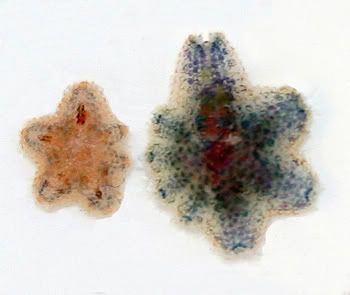saltn00b
Active Member
Ophi,
my battle with these infernal stars has come to a head and i need your advice.
i have one of the species of asterina stars that have tried there hand decimating SPS , i think zoanthids possibly and now lastly leathers.
i pull them out by hand when i see them, which keeps the population pretty low, but they are still there.
i tried a single harlequin shrimp ($35
 ) and he lasted 2 weeks. i have some secondary issue with new shrimp dissappearing. i think they may be getting eaten by my big old serpent or brittle stars.
) and he lasted 2 weeks. i have some secondary issue with new shrimp dissappearing. i think they may be getting eaten by my big old serpent or brittle stars.
what are my options , what can i do ? i need these guys OUT.
please help!
my battle with these infernal stars has come to a head and i need your advice.
i have one of the species of asterina stars that have tried there hand decimating SPS , i think zoanthids possibly and now lastly leathers.
i pull them out by hand when i see them, which keeps the population pretty low, but they are still there.
i tried a single harlequin shrimp ($35

what are my options , what can i do ? i need these guys OUT.
please help!


